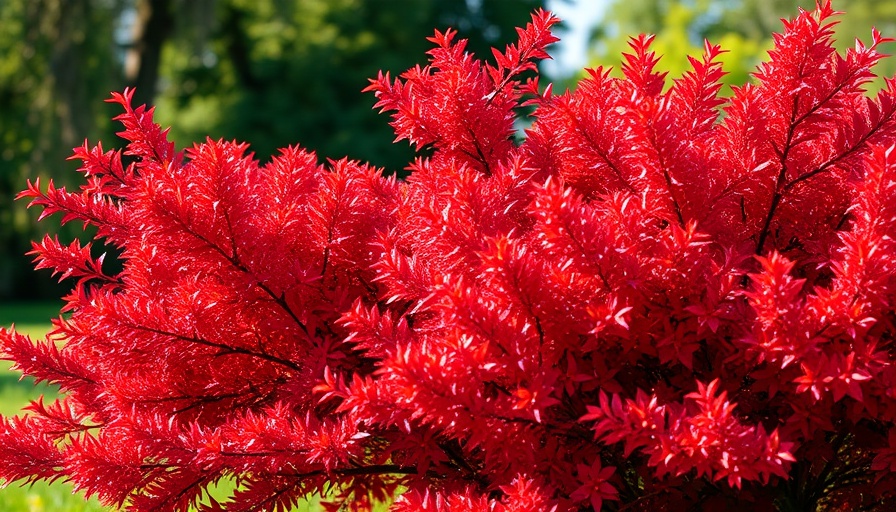
Transforming Front Yard Spaces: A Journey of Big Changes
In the heart of Queensland's Sunshine Coast, an extensive two-week project is underway that promises to change the face of a home’s front yard dramatically. This exciting makeover isn't just about aesthetics; it combines creativity, community spirit, and practical gardening know-how. For homeowners and garden enthusiasts looking to enhance their own spaces, this transformation offers valuable insights into effective garden design, and practical planting tips that anyone can tackle this weekend.
In 'Amazing Split Level Yard Makeover', the focus is on transforming outdoor spaces, and we’re analyzing its key insights to inspire your own gardening efforts.
Small Projects with Big Impact
One of the key takeaways from the makeover is how breaking down projects into smaller, manageable tasks can lead to significant results. Whether it's creating a fresh path or developing a small courtyard area, the notion that you can do what experts do at home resonates strongly. Each task is designed to enhance curb appeal and functionality while making it achievable for the average DIYer. Think about your goals: Are you aiming for a lush, green lawn, or do you prefer vibrant flower beds? This makeover is proving that thoughtful garden design doesn't need to be overwhelming.
Utilizing Landscaping Techniques
Attention to detail is paramount in landscaping. From planning the ideal slope to prevent slippage during rain to choosing the right materials for a retaining wall, the design focuses on practical and eye-catching elements. For those interested in incorporating similar strategies at home, consider using herbaceous borders or perennial flowers to maintain beauty while keeping maintenance low—a principle that supports sustainable gardening practices.
Decorative Features that Invite Community Come Together
In this upgrade, special features such as fire pits and elegant letterboxes add charm and functionality, promoting gatherings among neighbors and family. For example, a backyard fire pit enables cozy outdoor evenings, while quality decking invites guests to linger. The design clearly illustrates the importance of creating social spaces in garden planning. If you're looking to boost your home’s social charm, think about your own unique outdoor features that invite community and relaxation.
Strategies for Effective Lawn Care
Lawn care is pivotal for any front yard project, as first impressions matter. The makeover highlights the benefits of taking out old lawn to allow new turf to flourish. By utilizing DNA-certified soft leaf buffalo grass, homeowners are ensured a lush green lawn that withstands wear and tear. Understanding the intricacies of watering schedules, mulching, and fertilizing plants helps maintain that perfect lawn throughout the year, making it the envy of the neighborhood. Incorporating effective irrigation systems and organic gardening techniques will lead to healthier, more vibrant green spaces.
Functionality Meets Aesthetics in Design Choices
The transformation doesn’t stop at functional elements. The selection of garden decor like stunning sandstone boulders as seating and aesthetically pleasing timber frames reinforce the beauty of the outdoor space while enhancing usability. Emphasizing simple forms such as trellis designs or raised garden beds can add structural beauty and diversity to your garden, avoiding monotony while ensuring functionality. Whether through simple garden path ideas or thoughtful flower bed ideas, the aesthetic appeal amplifies the landscaping and uplifts the entire atmosphere.
The Power of Plant Selection
After completing the major structural changes, the final touch involved carefully selecting plants with character—like the vibrant lime light and cousin it varieties. Understanding the importance of plant health and integrating them into your garden design enhances not only the beauty but also contributes to soil health and ecological sustainability. When establishing a garden, consider experimenting with local plants that thrive in your environment. These plants require less maintenance and can help create a stunning display over the years.
Final Thoughts: Embracing Gardening Adventures
The remarkable journey seen in the makeup of this yard proves that with appropriate planning and a bit of hard work, significant change is achievable. Each segment of the project promotes community spirit, innovative landscaping ideas, and smart gardening techniques. Homeowners and garden lovers are encouraged to embrace their own gardening adventures, whether through a small weekend project or a larger scale renovation. Your dream garden is within reach, and it all starts with a single step into the green.
As communities evolve and homes become focal points for gathering, enhancing your outdoor space is not just a necessity; it's an opportunity for personal connection and celebration. So grab your shovels and start planting; a beautiful garden is waiting to grow!
 Add Row
Add Row  Add
Add 




Write A Comment